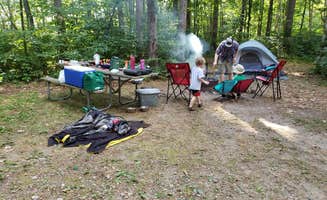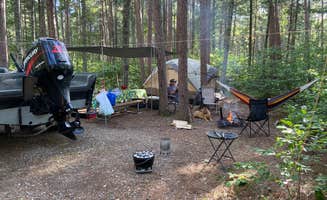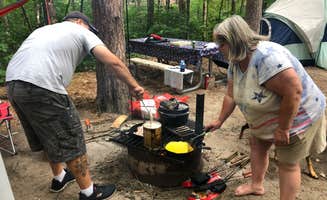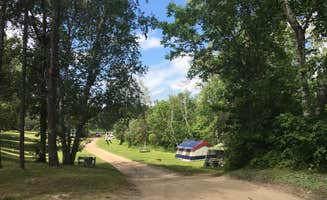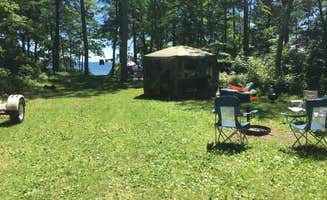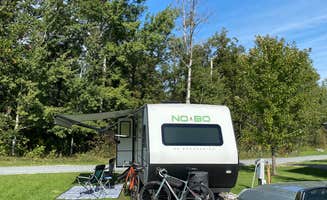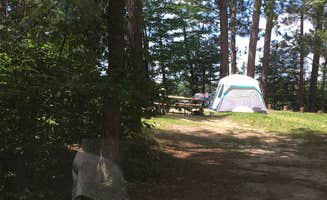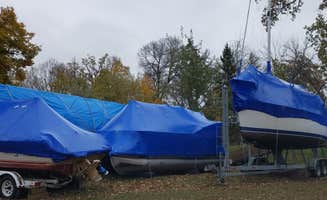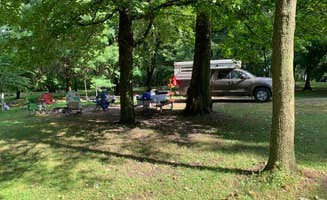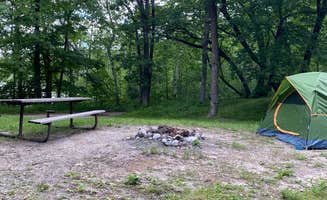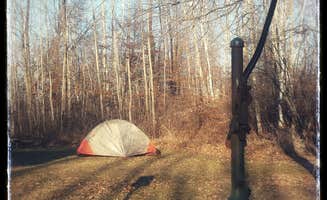Camping near Cass Lake, Minnesota offers options throughout the Minnesota north woods at elevations around 1,300 feet. The area sits within the Chippewa National Forest, which contains over 1.6 million acres of woods, wetlands, and lakes. Winter temperatures typically drop below zero, making May through October the most reliable camping season, though prepared campers can find year-round sites.
What to do
Beach activities: Norway Beach Loop offers a sandy shoreline perfect for swimming and sunbathing. "The lake has sand all around it, so easy to create your own private beach for your group," notes Lisa H. The shallow water makes it safe for families with younger children.
Fishing: Leech Lake Recreation Area & Campground provides excellent walleye fishing opportunities. "We spent the bulk of our time out on Leech Lake having luck catching some really nice Walleyes," shares TyAnn J. The campground includes a fish cleaning station building that's "super clean" for processing your catch.
Biking: The area features extensive paved and unpaved biking trails. "Lots of trails for cycling, walking and hiking," reports Ken J. about Norway Beach. The Paul Bunyan Trail connects multiple recreation areas and nearly loops around the entire lake, providing miles of scenic riding.
Wildlife viewing: The wetlands and forests support diverse wildlife. "The sunset over the lake were stunning and a loon hung around the dock while we fished," shares Allison K. Listen for loon calls in the evening - a distinctive sound in Minnesota's lake country.
What campers like
Privacy between sites: Lake Bemidji State Park Campground offers spacious campsites with good separation. "I appreciated the privacy between campsites," notes Susan R. Most sites include natural screening from neighboring campers.
Well-maintained facilities: Campgrounds in the area typically feature clean amenities. "Bathroom building is super clean. Shower rooms are singles and are separate from the toilet area," according to Caroline and John P. Many campgrounds are regularly inspected by rangers and volunteers.
Multiple ecosystems: The region contains diverse natural areas within short distances. "The park has several different biomes - oak forests, lakeshore, bog, pine forests with lovely hike-walks that can be as long or short as you need," reports Caroline and John P. This variety allows for different camping experiences even within a single park.
Wooded campsites: Norway Beach - Wanaki Campground Loop offers sites with substantial tree coverage. "It's what camping should be. Wooded between sites. Peaceful," shares jk D. The tall pines provide shade and natural screening between campsites.
What you should know
Limited non-reservable sites: Most popular campgrounds fill quickly, especially on weekends. "There are 5 or 6 nonreservable sites here. Great for biking the Migizi and Paul Bunyan," notes Levi S. about Wanaki Campground. Reserve 3-6 months in advance for summer weekends.
Insects can be intense: Bug activity increases in early summer and evening hours. "Mosquitoes will also sweep you off around 9pm even with bug spray," warns Lisa A. about camping at Stony Point. Consider bringing multiple types of repellent.
Boat access camping: Star Island Campground requires boat transportation. "You do need a boat to get over to it. There are no showers/water/garbage cans or electricity and one vault toilet. So plan to pack in and pack out everything," explains Brandy S.
Limited water hookups: Many campgrounds have communal water sources rather than site-specific hookups. "No water hookup at the sites, you have to fill up at the various spigots around the park," explains Rich S. about Norway Beach. Fill containers or RV tanks upon arrival.
Tips for camping with families
Playground access: Norway Beach - Chippewa Campground Loop provides recreation options for children. "We took a lot of bike rides and got to see a lot of the other sites and it had a lot of good tent sites," reports Allison K. The campground has paved roads suitable for kids learning to ride.
Beach safety: Cass Lake beaches typically feature gradual depth changes. "The beach was great albeit shallow. But nice soft sand," notes Scott G. about Stony Point. The shallow swimming areas allow easier supervision of young swimmers.
Rainy day options: Visitor centers provide indoor alternatives during inclement weather. "In the visitor center there was a really cool area for the kids to go to play if it was too hot or rainy, or if you just wanted to be indoors for a little bit," shares Allison K.
Reserve connected sites: For family groups, book adjacent sites early. "Site number 79 and 81 were joined together by a path that made it easy for us to all eat in one site," explains Allison K. This arrangement allows families to share meals while maintaining separate sleeping areas.
Tips from RVers
Uneven site surfaces: Many campgrounds have sloped or uneven pads. "We ended up making a Walmart run to get two more packs of leveling blocks and we use three packs of leveling blocks to make it level with room to have our awning and out," explains Allison K. about her experience at Stony Point Resort and Campground.
Limited dump stations: Plan waste tank management carefully. "No sewage dump on site," notes Crystal W. about Norway Beach. Some campgrounds require driving to neighboring facilities for waste disposal.
Electric site availability: Electric hookups vary between campgrounds. "We stayed in site number 33 which was the electric site with our 30 foot Jayco Eagle travel trailer," shares Allison K. about Leech Lake Recreation Area. Reserve electric sites 4-6 months in advance during peak season.
Site size variations: Research specific site dimensions before booking. "Site location does matter. Waterfront sites are amazing," advises David G. about Stony Point. Many online reservation systems include site-specific dimensions and photos.


